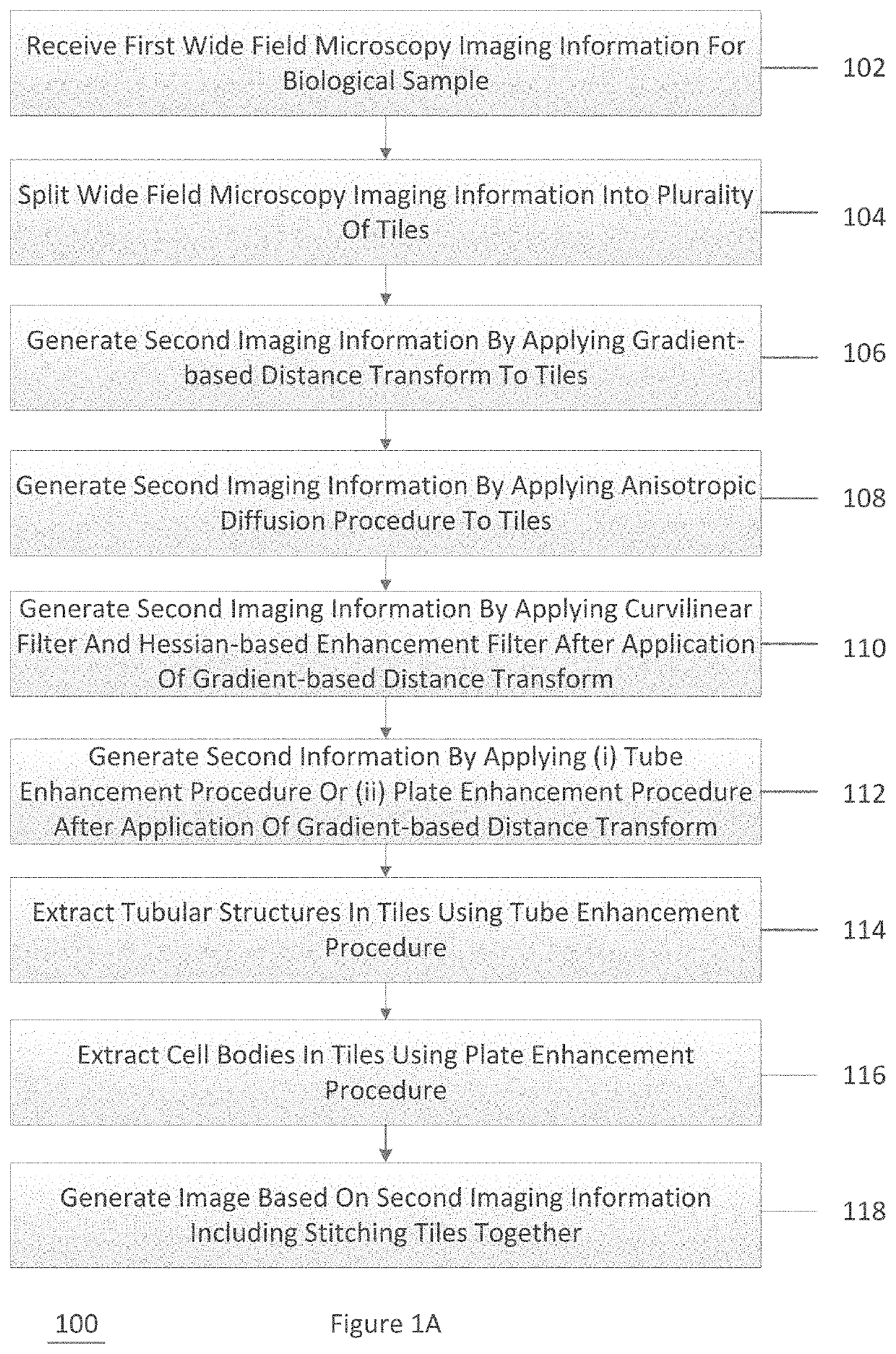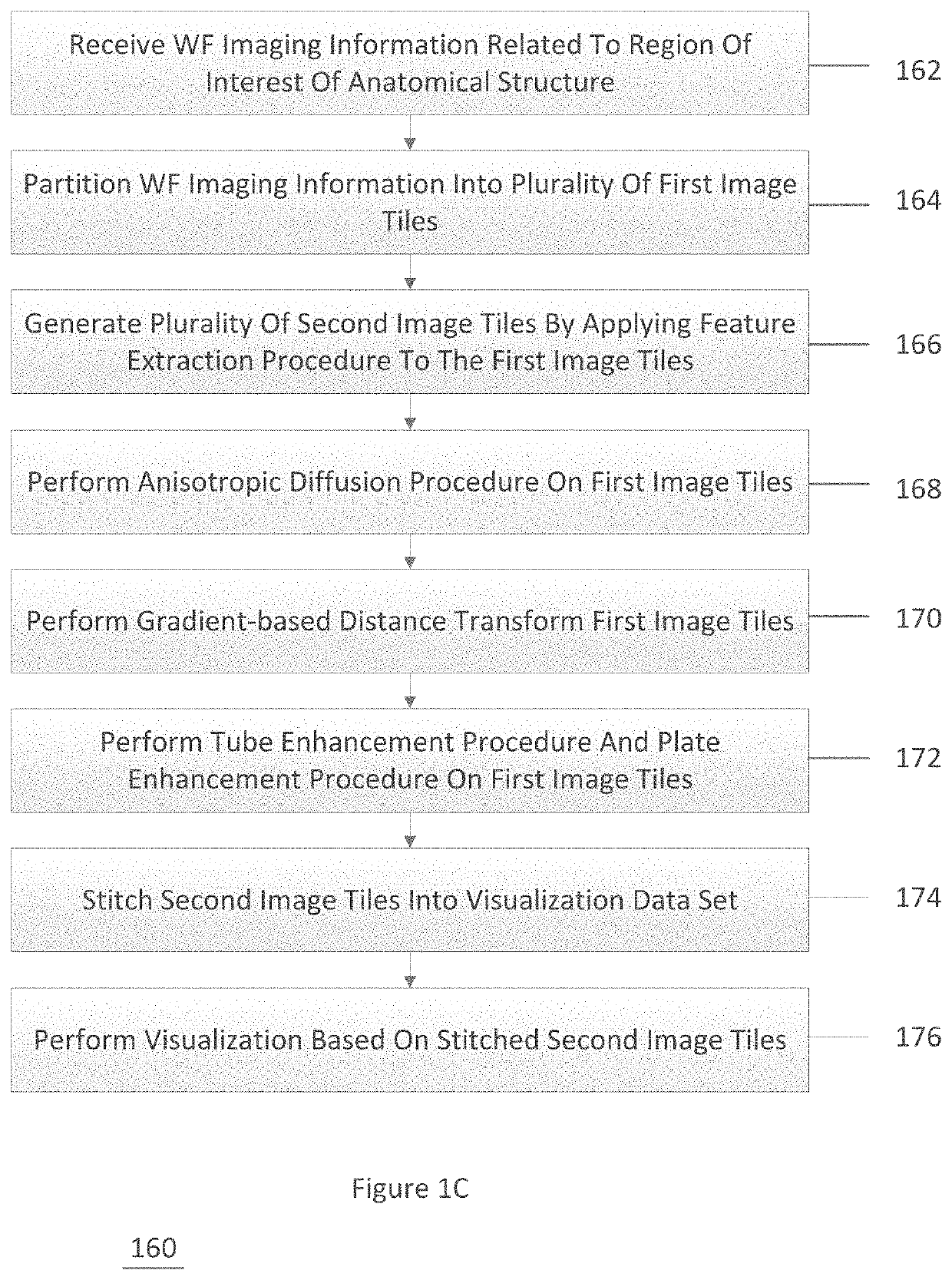System, method, and computer-accessible medium for processing brain images and extracting neuronal structures
a brain image and neuronal structure technology, applied in the field of microscopy, can solve the problems of poor axial resolution, degraded contrast between foreground and background voxels, and difficulty in analysis and visualization of wf data, and achieve the effect of minimizing an effect, maximizing the effect of in-focus voxels, and minimizing an
- Summary
- Abstract
- Description
- Claims
- Application Information
AI Technical Summary
Benefits of technology
Problems solved by technology
Method used
Image
Examples
Embodiment Construction
[0013]An exemplary system, method, and computer-accessible medium for generating an image(s) of an anatomical structure(s) in a biological sample(s) can include receiving first wide field microscopy imaging information for the biological sample, generating second imaging information by applying a gradient-based distance transform to the first imaging information, and generating the image(s) based on the second imaging information. The second imaging information can be generated by applying an anisotropic diffusion procedure to the first imaging information. The second imaging information can be generated by applying a curvilinear filter and a Hessian-based enhancement filter after the application of the gradient-based distance transform. The second information can be generated by applying (i) a tube enhancement procedure or (ii) a plate enhancement procedure after the application of the gradient-based distance transform. Tubular structures in the first imaging information can be ext...
PUM
 Login to View More
Login to View More Abstract
Description
Claims
Application Information
 Login to View More
Login to View More - R&D
- Intellectual Property
- Life Sciences
- Materials
- Tech Scout
- Unparalleled Data Quality
- Higher Quality Content
- 60% Fewer Hallucinations
Browse by: Latest US Patents, China's latest patents, Technical Efficacy Thesaurus, Application Domain, Technology Topic, Popular Technical Reports.
© 2025 PatSnap. All rights reserved.Legal|Privacy policy|Modern Slavery Act Transparency Statement|Sitemap|About US| Contact US: help@patsnap.com



